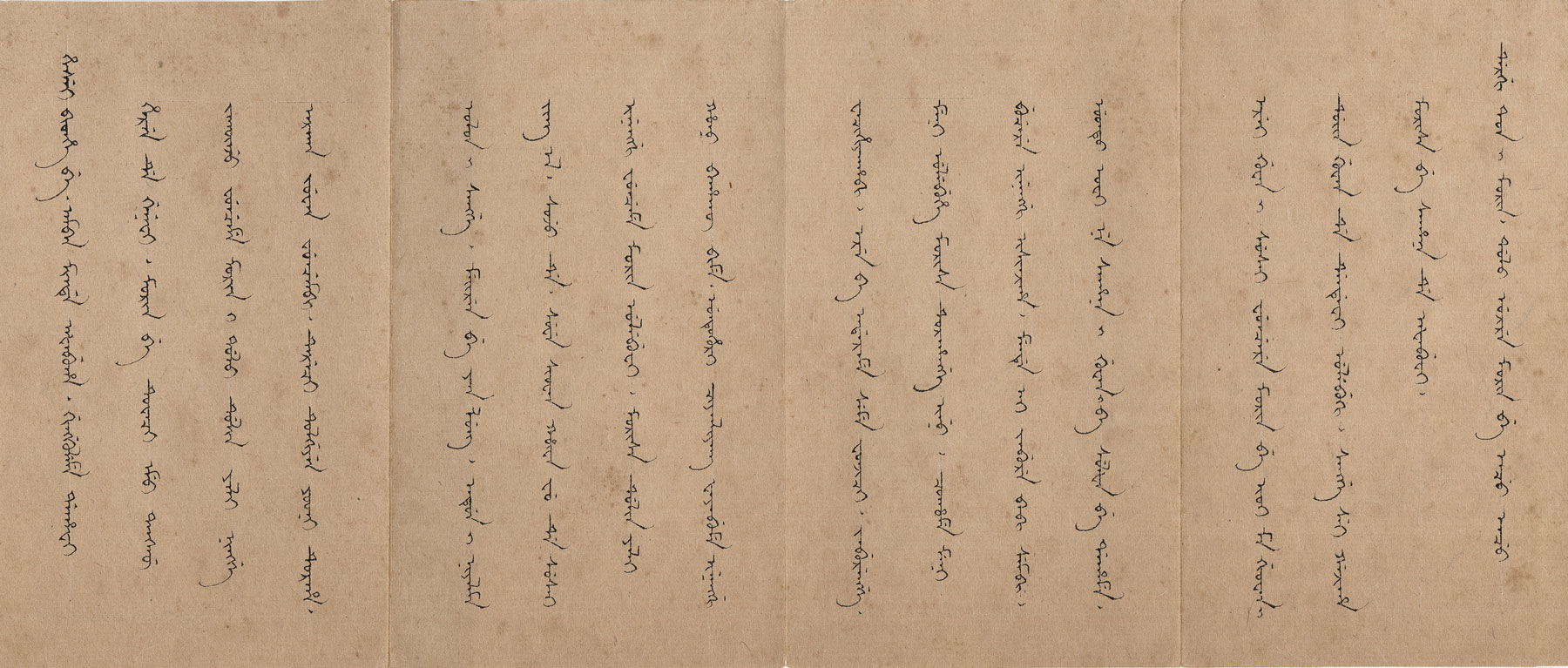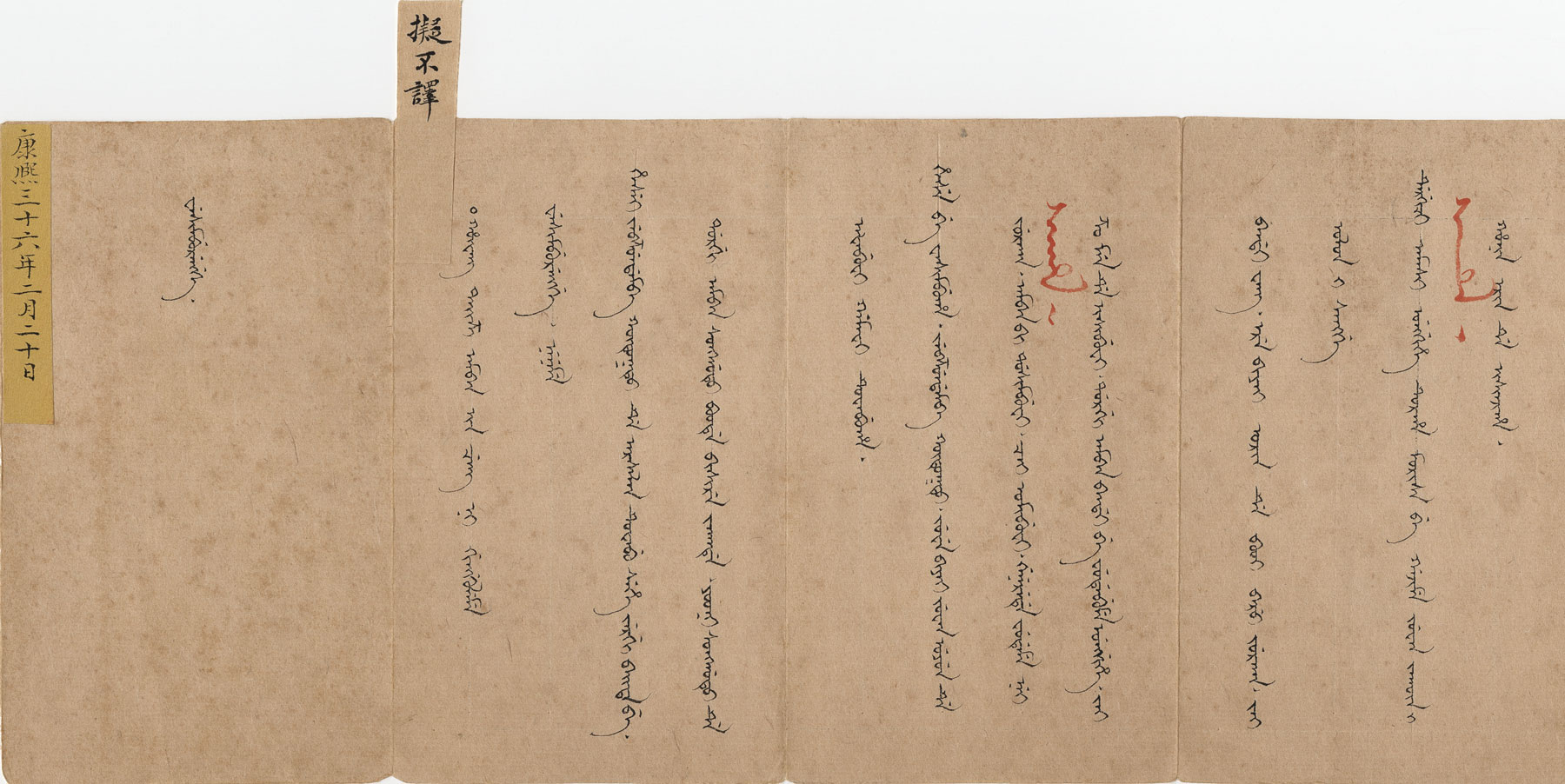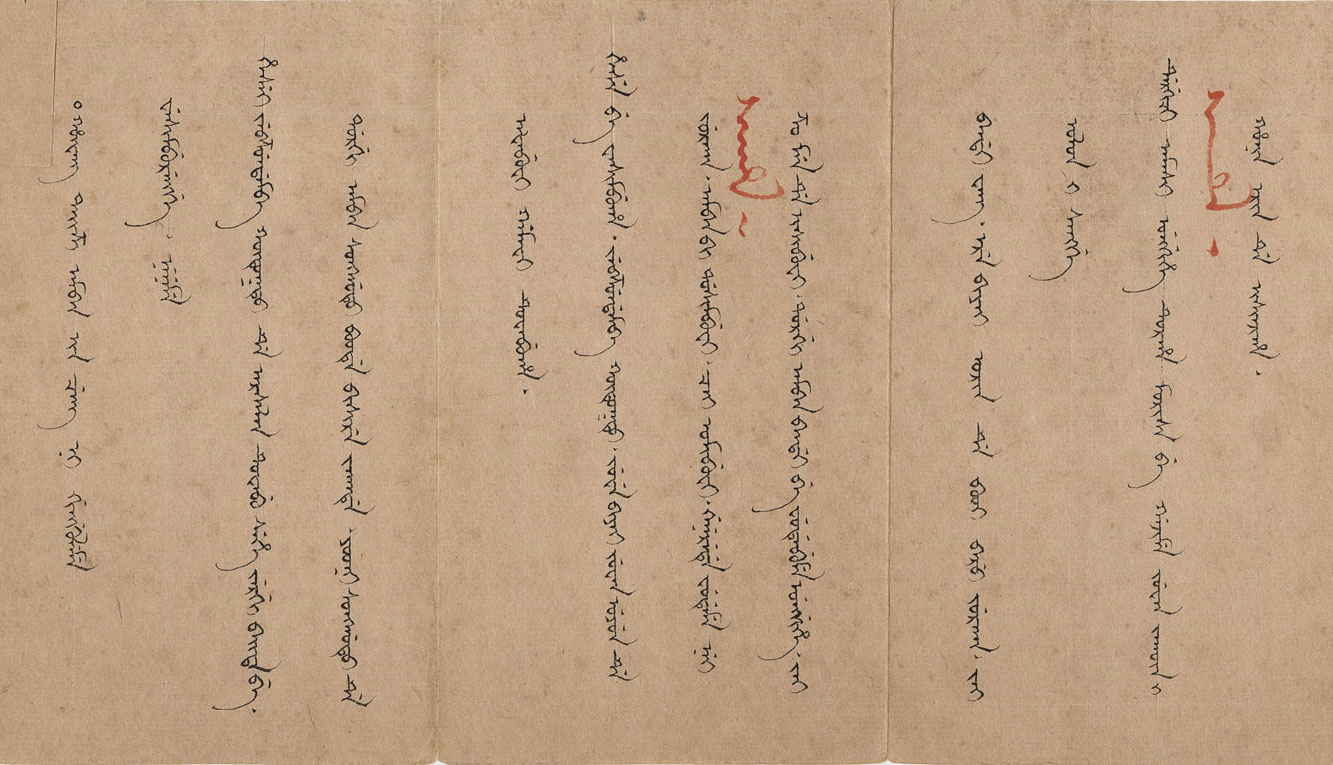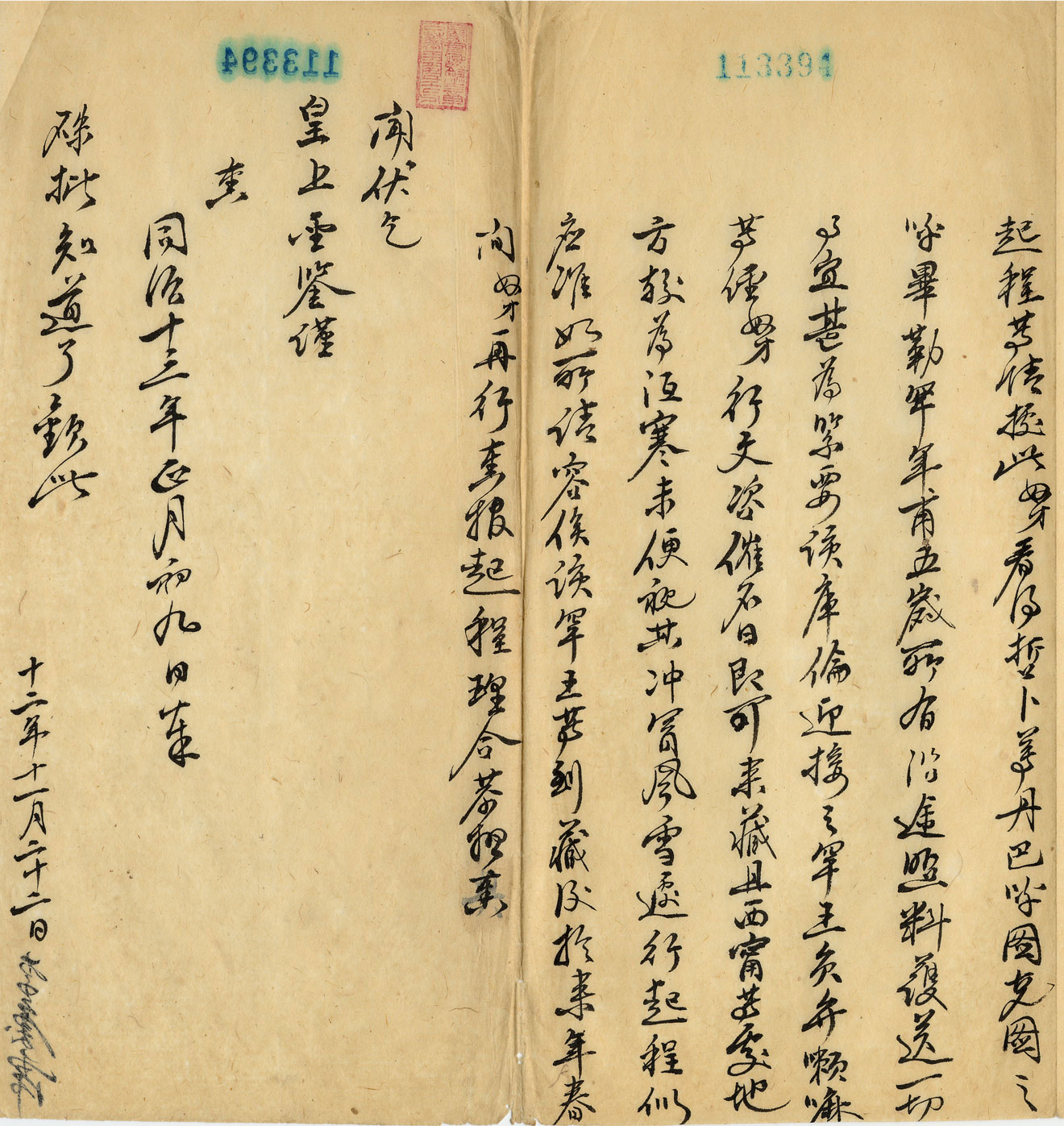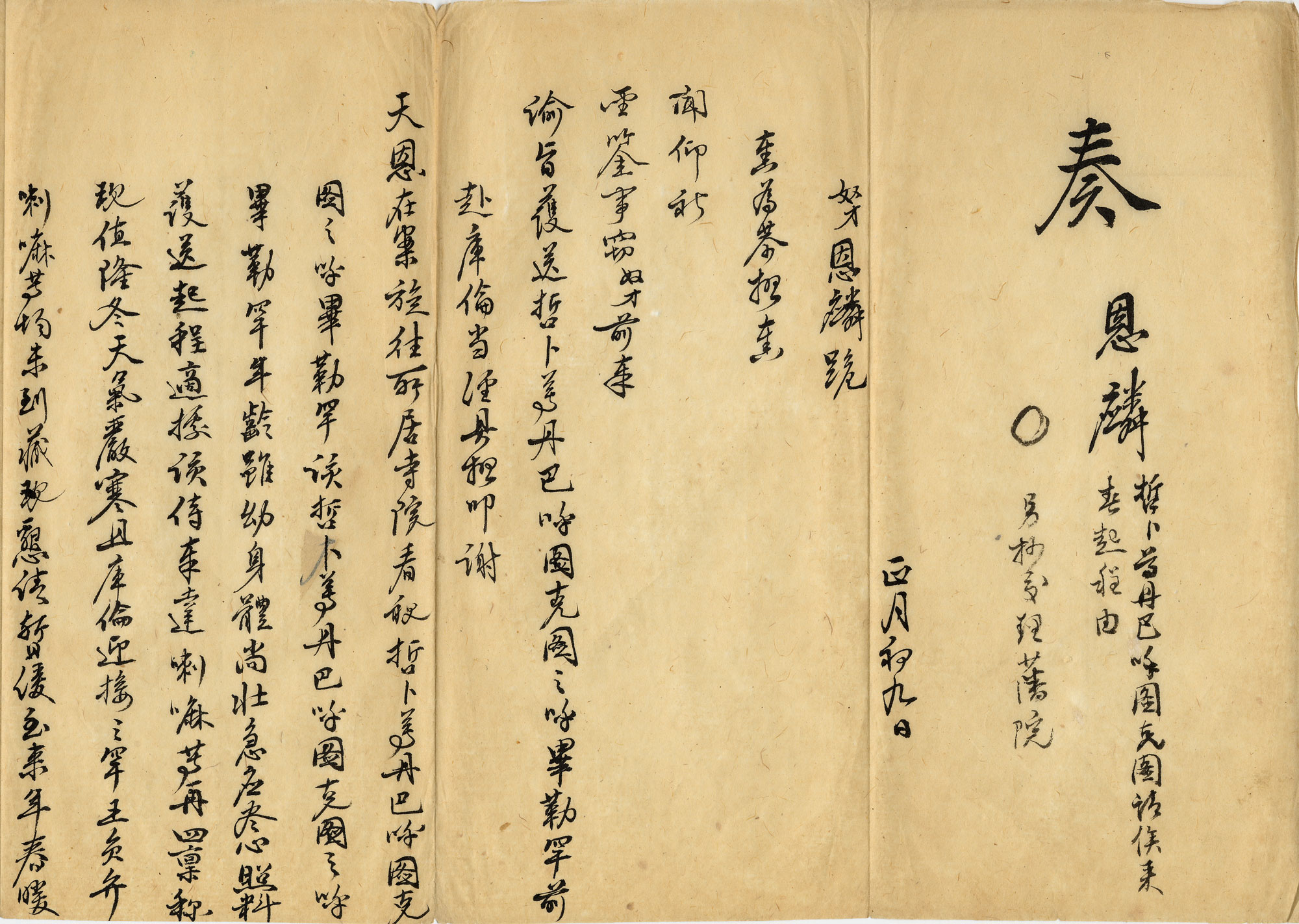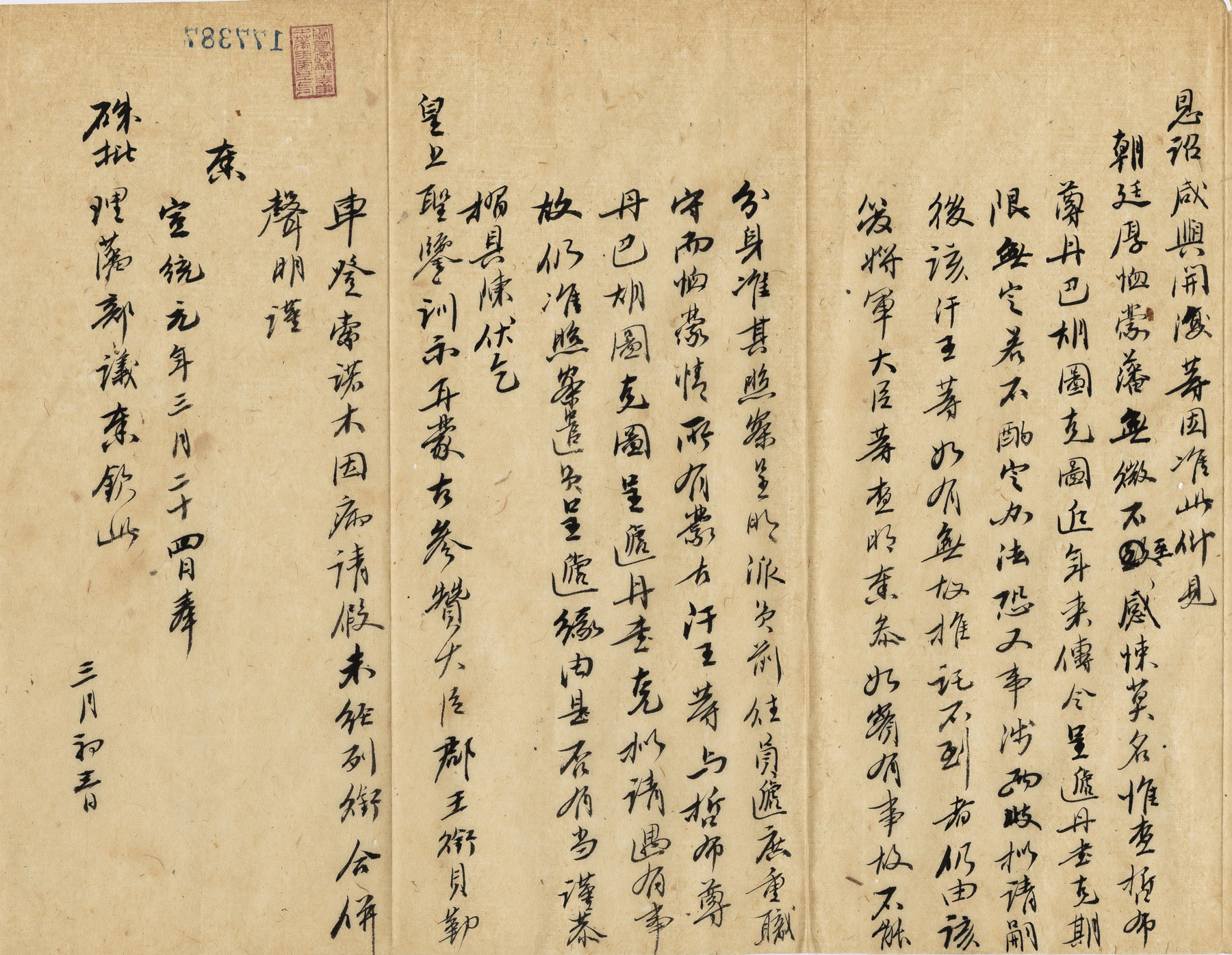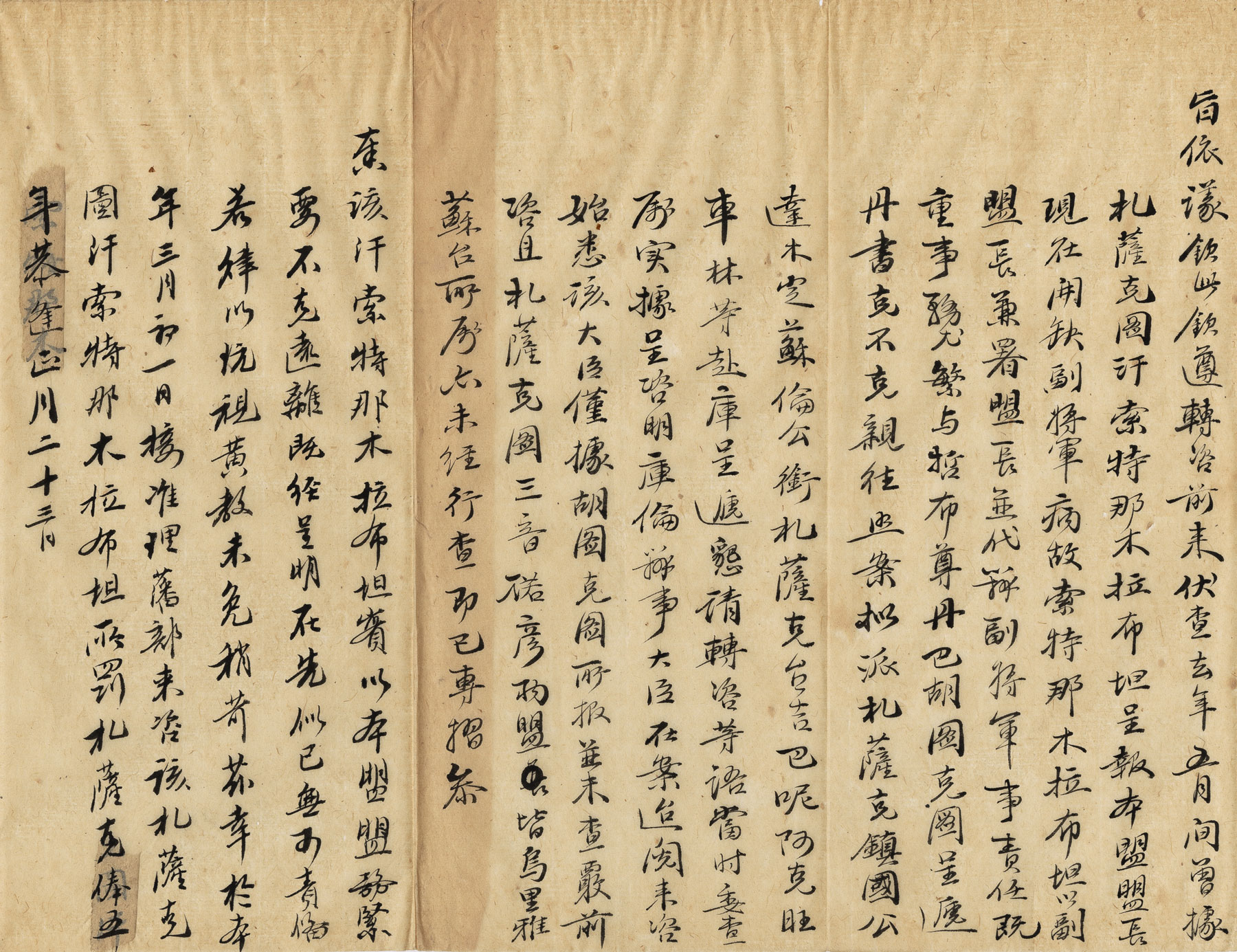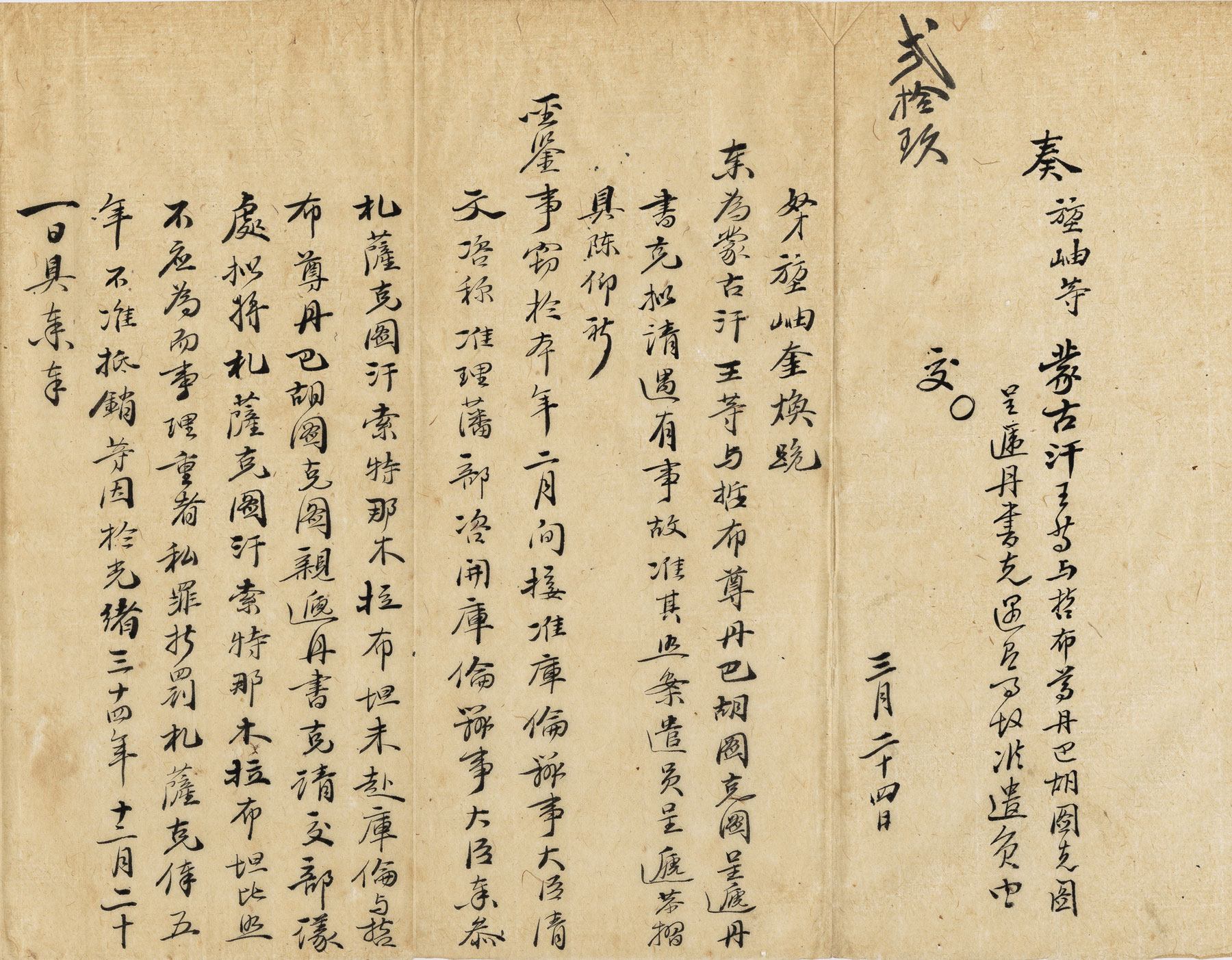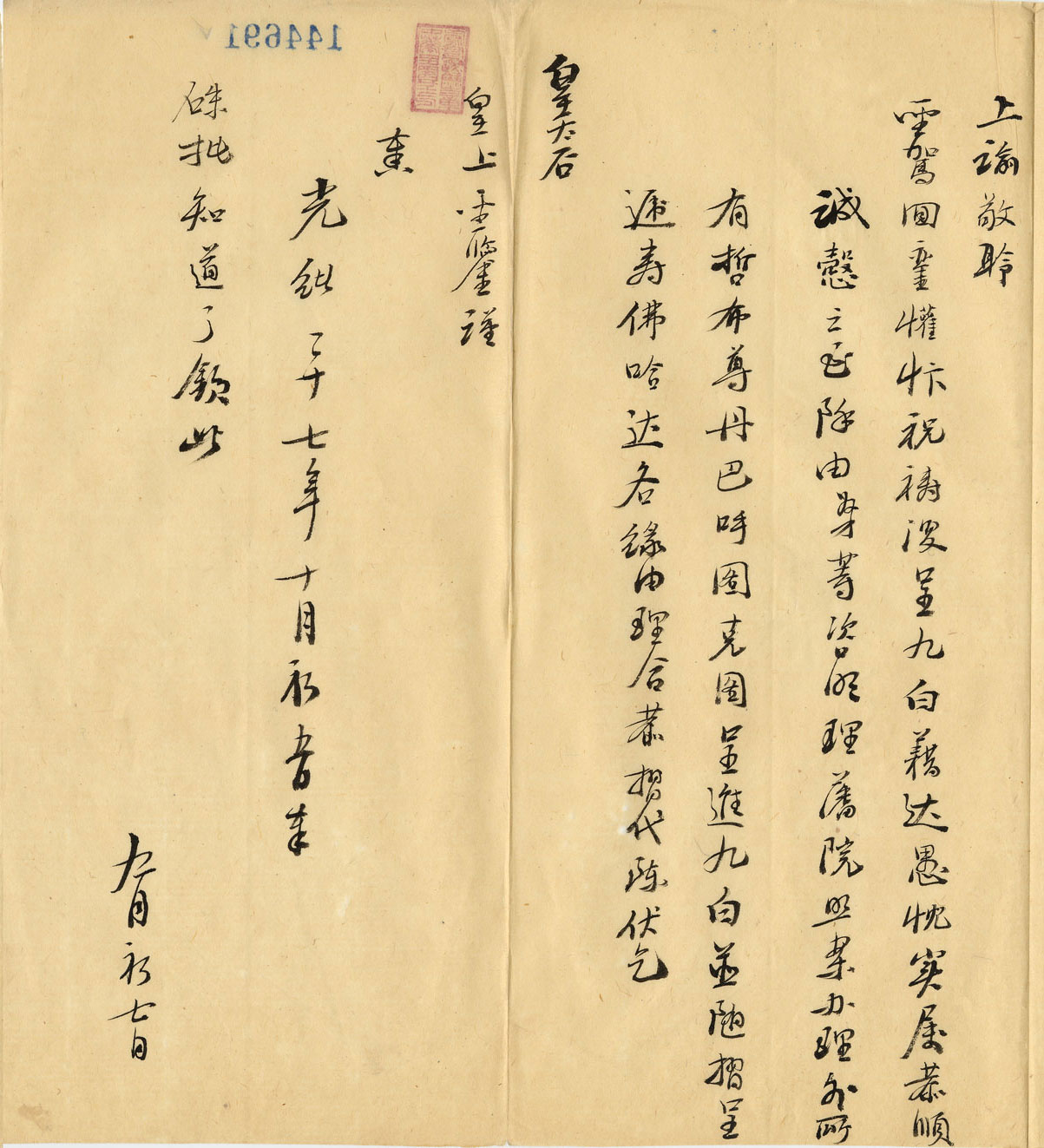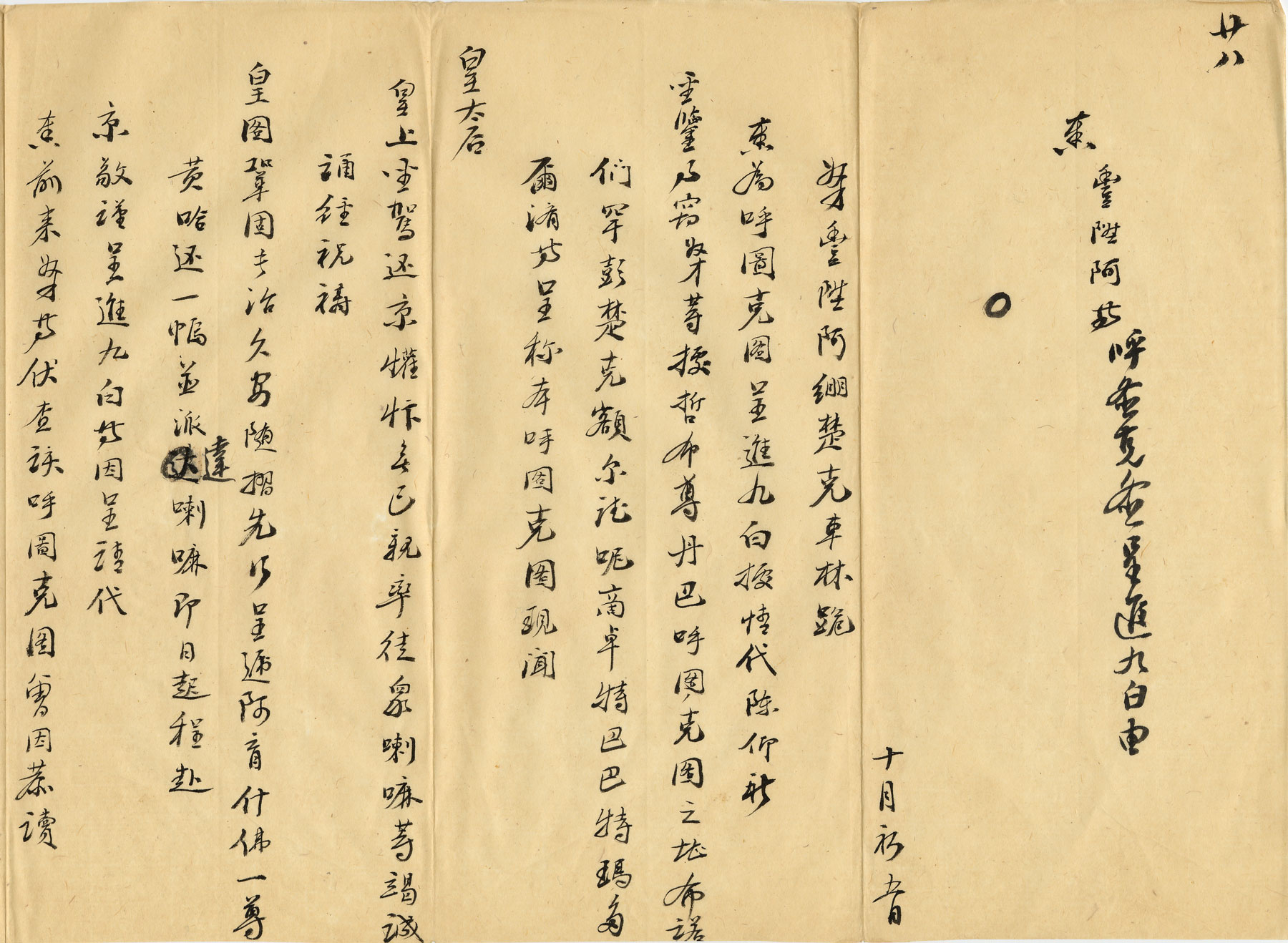The Changkya Khutukhtu of Amdo and the Jebtsundamba Khutuktu of Mongolia
The Changkya Khutukhtu was the highest-ranking khubilghan of the Gelug lineage in Inner Mongolia, Amdo (a traditional Tibetan region) and Beijing during the Qing dynasty. The title originated in the Kangxi reign (1661-1722), when the emperor conferred the title of Khutukhtu on the Second Changkya and presented him with a gold seal naming him Great State Preceptor.
The Qing dynasty saw six Changkya Khutukhtus, from the Second to the Seventh. The Jebtsundamba Khutuktu was the highest-ranking khubilghan of the Gelug lineage in Outer Mongolia during the Qing dynasty, which saw a total of eight Jebtsundamba Khutuktus, from the First to the Eighth. Losang Denpai Gyaltshan (1635-1723) was the First Jebtsundamba Khutuktu, and the title was awarded to him by the Fifth Dalai Lama (1617-1682) during his stay in Tibet studying Buddhism. In the 57th year of the Kangxi reign (1718), the emperor bestowed upon the First Jebtsundamba Khutuktu the title of Leader of the Yellow Sect in Outer Mongolia.
This section presents artifacts from the Museum's collections that relate to the Third Changkya, Rölpé Dorjé (1717-1786), who lived in the Qianlong reign (1735-1795) and is the most famous of his lineage. It also features objects that belonged to the Seventh Changkya (1891-1957) who relocated to Taiwan together with the Republican government. Included in this lineup of exhibits are his religious paraphernalia, correspondence and written works, on loan for the first time from the Ministry of Culture's Mongolian and Tibetan Cultural Center. For the Jebtsundamba Khutuktu lineage, the exhibition focuses on important documents in the Museum's collection relating to the two most influential leaders, the First Jebtsundamba (1635-1723) of the Kangxi reign and the Eighth Jebtsundamba (1869-1924) in the late Qing dynasty.
The Jebtsundamba Khutuktu
The title of Jebtsundamba was first awarded by the Fifth Dalai Lama. The Kangxi emperor also bestowed upon the First Jebtsundamba, the highest religious leader of the Khalkha, the title of Khutuktu. The first two Jebtsundamba Khutuktus were members of the Mongolian Tüsheet Khan, while reincarnations from the Third Jebtsundamba onwards hailed from the Tibetan region.
Palace memorial on the arrival of the Jebtsundamba Khutuktu in the capital
- Submitted by Crown Prince Yincheng (1674-1725)
- 20th day of the 2nd month of the 36th year of the Kangxi reign (March 12, 1697), Qing dynasty
During the invasion of the Khalkha by the Dzungars in the 27th year of the Kangxi reign (1688), the Erdene Zuu Monastery (Chinese name Guangxian Monastery) of the First Jebtsundamba Khutuktu (1635-1723) was destroyed, so the religious leader led other Khalkha Mongol nobles to pay homage to the Kangxi emperor (r. 1661-1722) and submit to Qing rule. In the winter of the 30th year of the Kangxi reign (1691), the First Jebtsundamba Khutuktu was invited by the emperor to visit Beijing, and he did not return to his home region to rebuild his monastery until the 39th year of the emperor's reign (1700), when the Dzungars had been defeated. When this Manchu palace memorial was submitted, the Kangxi emperor was personally leading an expedition from Jehol to expel the Dzungars. The first half of the memorial is a report to the emperor by Yunreng on the visit of the First Jebtsundamba Khutuktu, and the remainder is an account of military affairs. The memorial also mentions that the minister Songgotu (1606-1703) followed an imperial order to show the Jebtsundamba Khutuktu a lion in the Qing court that had been given in tribute by Portuguese merchants in Macau, who had shipped it from Mozambique. The Kangxi emperor would frequently hold banquets in court to show guests the lion.
The First Jebtsundamba Khutuktu was known for his artistic talent and credited as the creator of the Zanabazar style. He made several Buddhist statues for imperial Buddhist temples in the Forbidden City.
Copy of a palace memorial on the Jebtsundamba Khutuktu's trip to Kulun in the coming spring
- Submitted by Enlin (n.d.), Imperial Resident in Tibet
- 22nd day of the 11th month of 12th year of the Tongzhi reign (January 10, 1874), Qing dynasty
During the term of the Second Jebtsundamba Khutuktu (1724-1758), the Mongolian religious leader's brother Chingünjav (1710-1751) led a rebellion against the Qing court. After the demise of the Second Jebtsundamba Khutuktu, the Qianlong emperor decreed that future reincarnations of the Jebtsundamba Khutuktu would no longer be found among the populace of the Khalkha Mongols but rather in Tibet, which is why from the Third Jebtsundamba Khutuktu on, all Jebtsundamba Khutuktus were Tibetan. The father of the Eighth Jebtsundamba Khutuktu (1869-1924) was a Lhasa aristocrat and served as an accountant to the Twelfth Dalai (1857-1875). This palace memorial details arrangements for the then five-year-old Eighth Jebtsundamba Khutuktu to travel to Mongolia in the coming spring.
Copy of a palace memorial on a request made by Mongolian khans and the Jebtsundamba Khutuktu to assist in the handling of an incident
- Submitted by Kunxiu (n.d.) and Kuihuan (n.d.)
- 3rd day of the 3rd month of the 1st year of the Xuantong reign (April 22, 1909), Qing dynasty
This palace memorial, submitted by Kunxiu, then the general stationed in Uliastai in Mongolia, records a request from the Eighth Jebtsundamba Khutuktu (1869-1924) to the Qing court to handle local Mongolian affairs. With the request also came the formality of presenting the brdan-bzhugs (credentials), but as the Jebtsundamba Khutuktu was not required to regularly present the brdan-bzhugs, the General of Uliastai submitted a palace memorial asking whether the request should be granted. In the late Qing dynasty, the Qing empire was in great decline and its control over Mongolia had also weakened. In the 3rd year of the Xuantong reign (1911), the Eighth Jebtsundamba Khutuktu declared independence from the Qing empire and was proclaimed Bogd Khan (the Holy King).
Copy of a palace memorial on the presentation by the Jebtsundamba Khutuktu of a white camel, eight white horses, a statue of Amitāyus, and a khata
- Submitted by Fengshenga (?-1909), Minister of Kulun, et al.
- 7th day of the 9th month of the 27th year of the Guangxu reign (October 18, 1901), Qing dynasty
Starting in the Shunzhi reign (1643–1661) in the early Qing dynasty, Khalkha Mongols were required to present "nine white tributes." This palace memorial specifies the tributes consisted of "one white camel and eight white horses," which were to be presented by the Jebtsundamba Khutuktu, as was the custom. By the late Qing dynasty, the empire was in decline, and the presentation of the nine white tributes no longer took place as regularly as before, which is why the Minister of Kulun presented a memorial to record the contents of the tribute.
